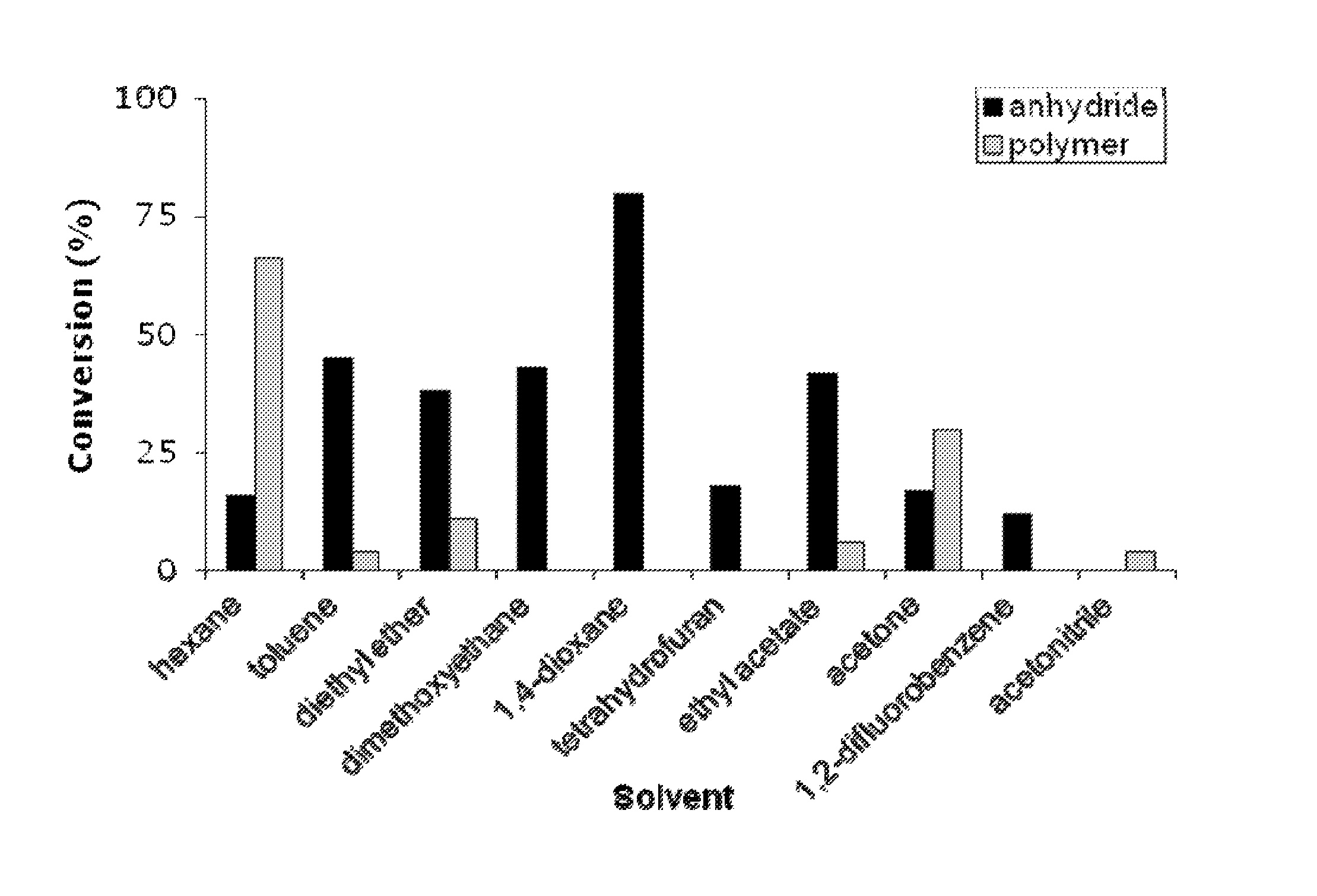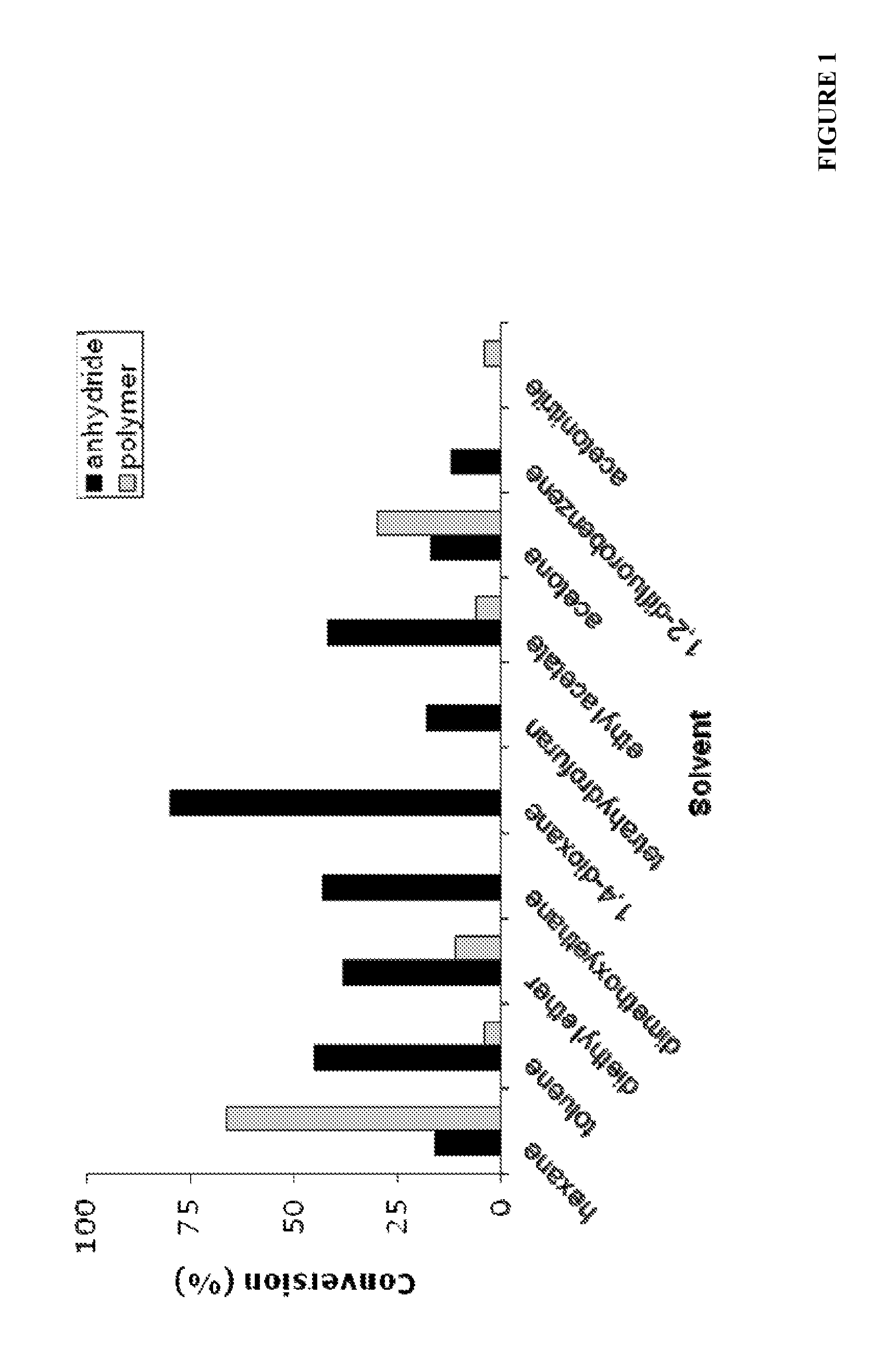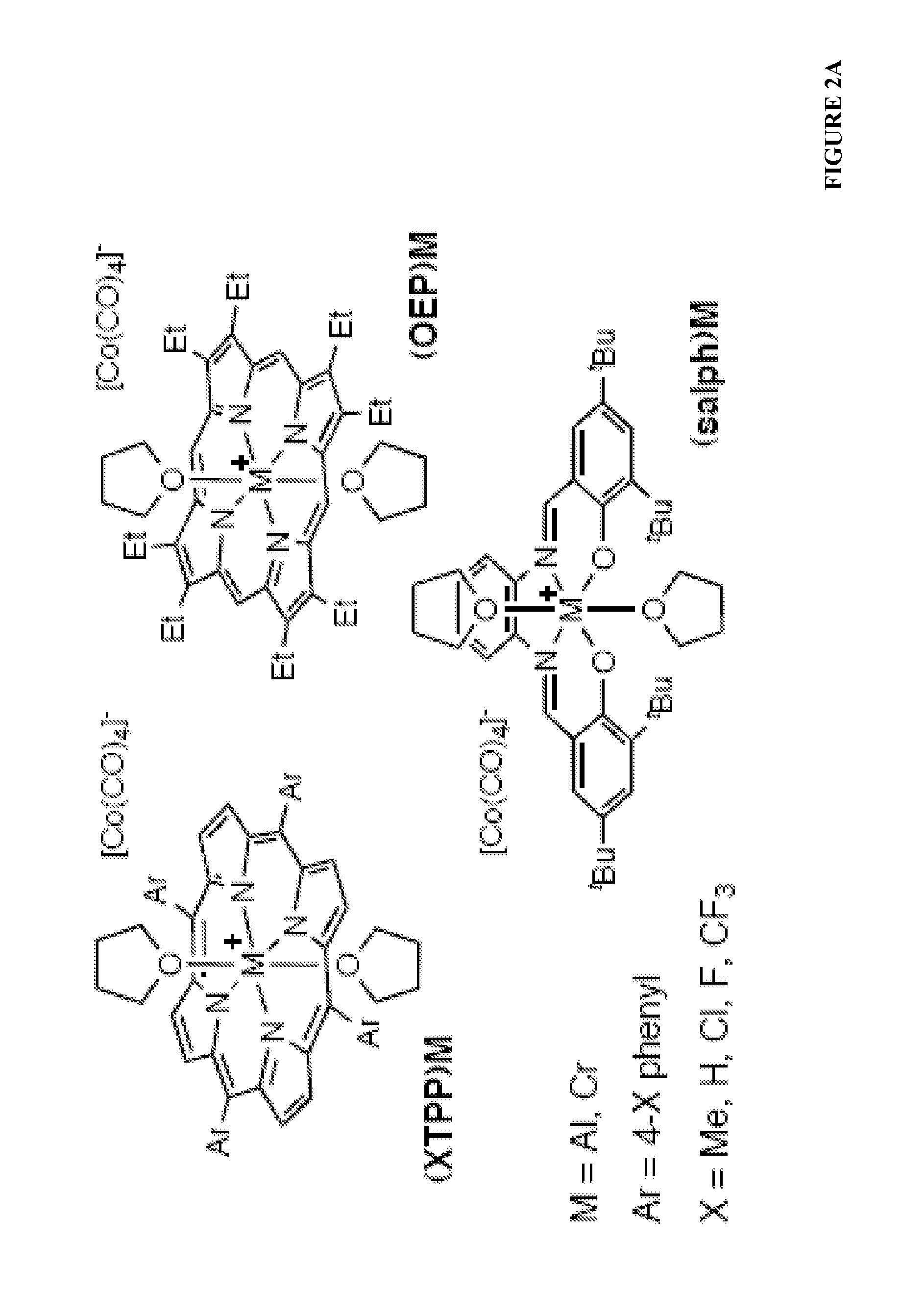Succinic anhydrides from epoxides
a technology of succinic anhydrides and epoxides, applied in the field of succinic anhydrides from epoxides, can solve the problems of previously unachievable use process according to the scheme 2
- Summary
- Abstract
- Description
- Claims
- Application Information
AI Technical Summary
Benefits of technology
Problems solved by technology
Method used
Image
Examples
example 1
[0143]This example describes our initial attempts to effect high yield single reaction double carbonylation using catalysts and conditions we had previously reported for ring-expansive epoxide and lactone carbonylation. The results of these studies are summarized in Table 1, entries 1-4.
[0144]Although [(salph)Al(THF)2]+[Co(CO)4]− (2 in Chart 1 and 2a elsewhere in the specification; salph ═N,N′-bis(3,5-di-tert-butylsalicylidene)-1,2-phenylenediamine; THF=tetrahydrofuran) is the only catalyst which has been reported for both epoxide (Getzler et al., J. Am. Chem. Soc. 2002, 124, 1174-1175) and β-lactone (Getzler et al., J. Am. Chem. Soc. 2004, 126, 6842-6843) carbonylation, these two independent reactions were found to be orthogonal, such that the reaction conditions, particularly solvent (vide infra), which facilitated the first carbonylation, severely limited the second, and vice versa. For example, whereas lactone formation was facile in neat epoxide (entry 1) or ether solvents; non...
example 2
[0149]This example describes an exemplary bimetallic catalyst [(ClTPP)Al(THF)2]+[Co(CO)4]− (1 in Chart 1 and 1c elsewhere in the specification; ClTPP=meso-tetra(4-chlorophenyl)porphyrinato) which rapidly catalyzed both epoxide and lactone carbonylation. While some low-molecular-weight polymer was formed in the absence of solvent (Table 1, entry 5), addition of solvent resulted in the first high yield single reaction double carbonylation of epoxide to succinic anhydride (entry 6).
[0150]Though double carbonylation proceeded at 25° C., increasing the temperature to 90° C. accelerated the reaction without decreasing selectivity Anhydrides were formed cleanly at pressures as low as 100 psi; however, at lower pressures and in the absence of CO, 1c catalytically isomerizes epoxides to ketones.
[0151]In order to assess the impact of solvent on the rate of reaction, we attempted epoxide double carbonylation in a range of solvents. Conversion to succinic anhydride varied widely with solvent, a...
example 3
[0152]This example describes other exemplary catalysts of the general form [(ligand)M(THF)2]+[Co(CO)4]− which are capable of high yield double carbonylation in 1,4-dioxane (FIG. 2A). As shown in FIG. 2B, under these conditions Cp2Ti (Cp=cyclopentadienyl) only converted 6% of the epoxide to lactone, and made no anhydride. The only catalyst previously reported for epoxide and β-lactone carbonylation, (salph)Al (see also Example 1 where it was tested in neat epoxide and toluene), was slow for double carbonylation. Interestingly, the chromium analog, (salph)Cr, was much faster than (salph)Al. (TPP)Cr and (OEP)Cr (see also Example 1 where it was tested in neat epoxide and toluene) were also capable of yielding significant amounts of anhydride though these porphyrin Cr complexes gave poly(lactone) as a significant byproduct. Significantly, the aluminum analogs, (TPP)Al and (OEP)Al gave much cleaner yields of anhydride. Relative to the tetraphenylporphyrin (TPP) ligands, the more electron-...
PUM
| Property | Measurement | Unit |
|---|---|---|
| dielectric constant | aaaaa | aaaaa |
| dielectric constant | aaaaa | aaaaa |
| dielectric constant | aaaaa | aaaaa |
Abstract
Description
Claims
Application Information
 Login to View More
Login to View More - R&D
- Intellectual Property
- Life Sciences
- Materials
- Tech Scout
- Unparalleled Data Quality
- Higher Quality Content
- 60% Fewer Hallucinations
Browse by: Latest US Patents, China's latest patents, Technical Efficacy Thesaurus, Application Domain, Technology Topic, Popular Technical Reports.
© 2025 PatSnap. All rights reserved.Legal|Privacy policy|Modern Slavery Act Transparency Statement|Sitemap|About US| Contact US: help@patsnap.com



